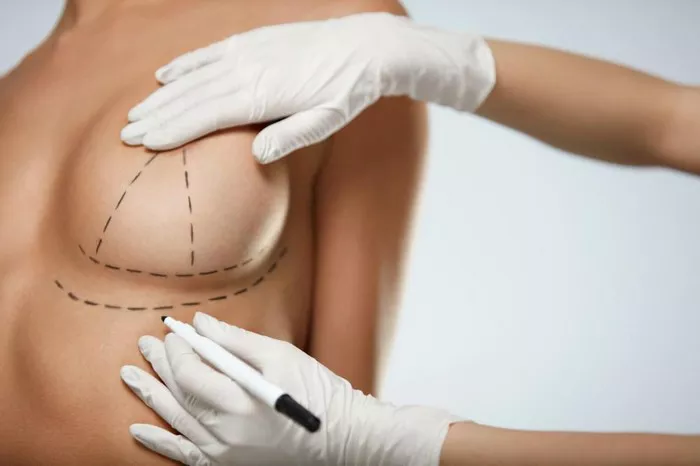Breast augmentation is a surgical procedure that involves the placement of breast implants to enhance the size and shape of the breasts. While the procedure is generally safe and effective, many women are concerned about the pain and discomfort associated with the recovery process. In this article, we will explore the various factors that can affect the pain level during breast augmentation recovery and provide tips for minimizing discomfort.
Factors that Affect Pain Level during Breast Augmentation Recovery
-
Type of Procedure
There are several different types of breast augmentation procedures, each with their own recovery timeline and level of pain. In general, the more invasive the procedure, the more pain a patient is likely to experience during recovery. For example, subglandular placement (above the chest muscle) typically results in less pain than submuscular placement (below the chest muscle).
-
Size of Implants
The size of the breast implants can also impact the level of pain experienced during recovery. Larger implants require more stretching of the breast tissue and can lead to increased discomfort.
-
Placement of Incision
The placement of the incision can also affect the level of pain experienced during recovery. Incisions made in the crease under the breast or around the areola tend to be less painful than those made in the armpit or belly button.
-
Pain Tolerance
Every individual has a different pain tolerance, which can affect the level of discomfort they experience during breast augmentation recovery. Some people may be able to manage their pain with over-the-counter pain medications, while others may require stronger prescription pain medication.
Tips for Minimizing Discomfort During Breast Augmentation Recovery
-
Follow Post-Operative Instructions
Following the surgeon’s post-operative instructions is critical for minimizing discomfort during recovery. These instructions may include limiting physical activity, wearing a supportive bra, and taking medication as prescribed.
-
Manage Pain with Medication
Over-the-counter pain medication, such as ibuprofen, can be effective in managing pain during breast augmentation recovery. If the pain is more severe, prescription pain medication may be required.
-
Use Ice Packs
Applying ice packs to the breasts can help reduce swelling and discomfort during the recovery process. It is important to avoid placing ice directly on the skin, as this can cause damage. Instead, wrap the ice pack in a towel or cloth before applying it to the breast.
-
Rest and Relax
Resting and relaxing can help the body heal and reduce discomfort during breast augmentation recovery. Patients should avoid strenuous activities for at least several weeks after the procedure and get plenty of rest.
-
Eat a Healthy Diet
Eating a healthy diet rich in vitamins and nutrients can help speed up the healing process and reduce discomfort. Patients should aim to eat plenty of fruits, vegetables, lean protein, and whole grains.
-
Wear a Supportive Bra
Wearing a supportive bra can help reduce swelling and discomfort during breast augmentation recovery. Patients should wear a comfortable, well-fitting bra that provides adequate support.
-
Stay Hydrated
Drinking plenty of water and other fluids can help the body flush out toxins and reduce discomfort during breast augmentation recovery.
-
Follow Up with Surgeon
It is important to attend all follow-up appointments with the surgeon to ensure proper healing and monitor for any complications. The surgeon may also be able to provide additional tips for minimizing discomfort during recovery.
Conclusion
Breast augmentation is a popular procedure that can enhance the size and shape of the breasts. While the recovery process can be uncomfortable, there are several steps patients can take to minimize discomfort. Factors that can affect the pain level during recovery include the type of procedure, size of implants, placement of incision, and pain tolerance. Patients can minimize discomfort during recovery by following post-operative instructions, managing pain with medication, using ice packs, resting and relaxing, eating a healthy diet, wearing a supportive bra, staying hydrated, and attending all follow-up appointments with the surgeon. By following these tips, patients can minimize discomfort and achieve optimal results from their breast augmentation procedure.
In summary, breast augmentation recovery can be a painful and uncomfortable experience for some patients, but it is important to remember that everyone’s experience is different. The level of pain experienced during recovery can be affected by several factors, including the type of procedure, size of implants, placement of incision, and pain tolerance. However, there are several steps patients can take to minimize discomfort during recovery, such as following post-operative instructions, managing pain with medication, using ice packs, resting and relaxing, eating a healthy diet, wearing a supportive bra, staying hydrated, and attending all follow-up appointments with the surgeon. If patients have any concerns or questions about their breast augmentation recovery, they should not hesitate to contact their surgeon for guidance and support.


